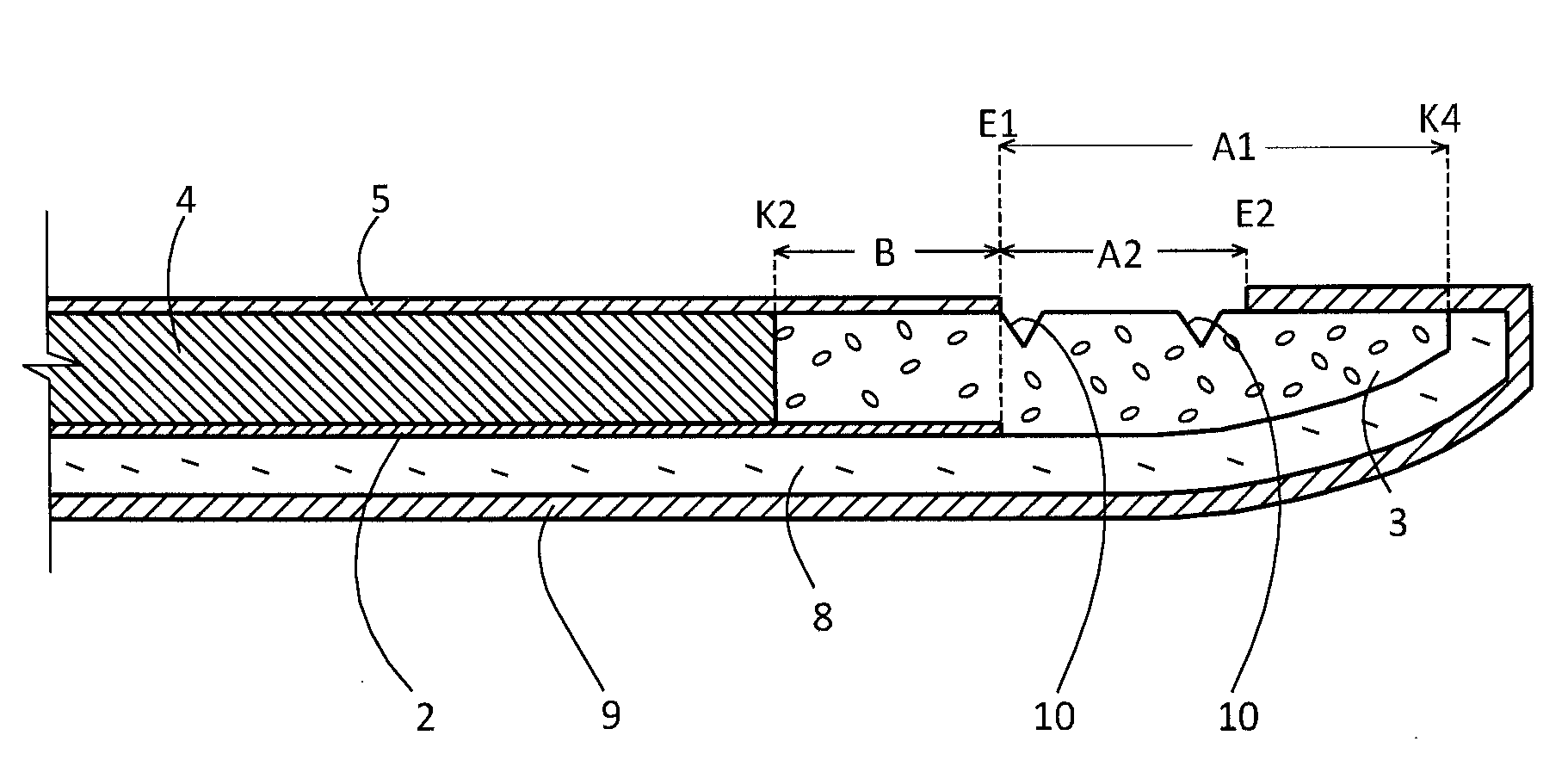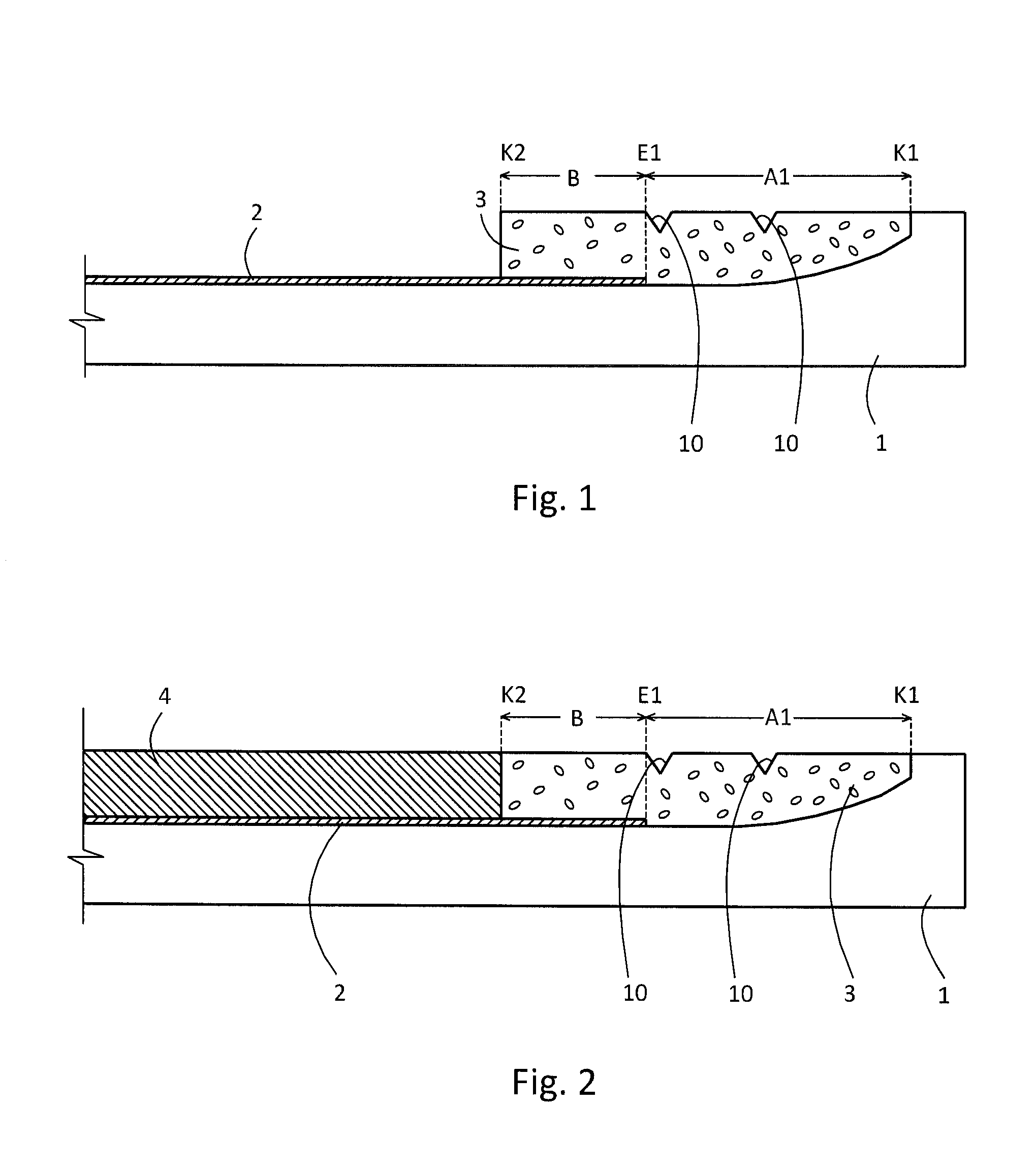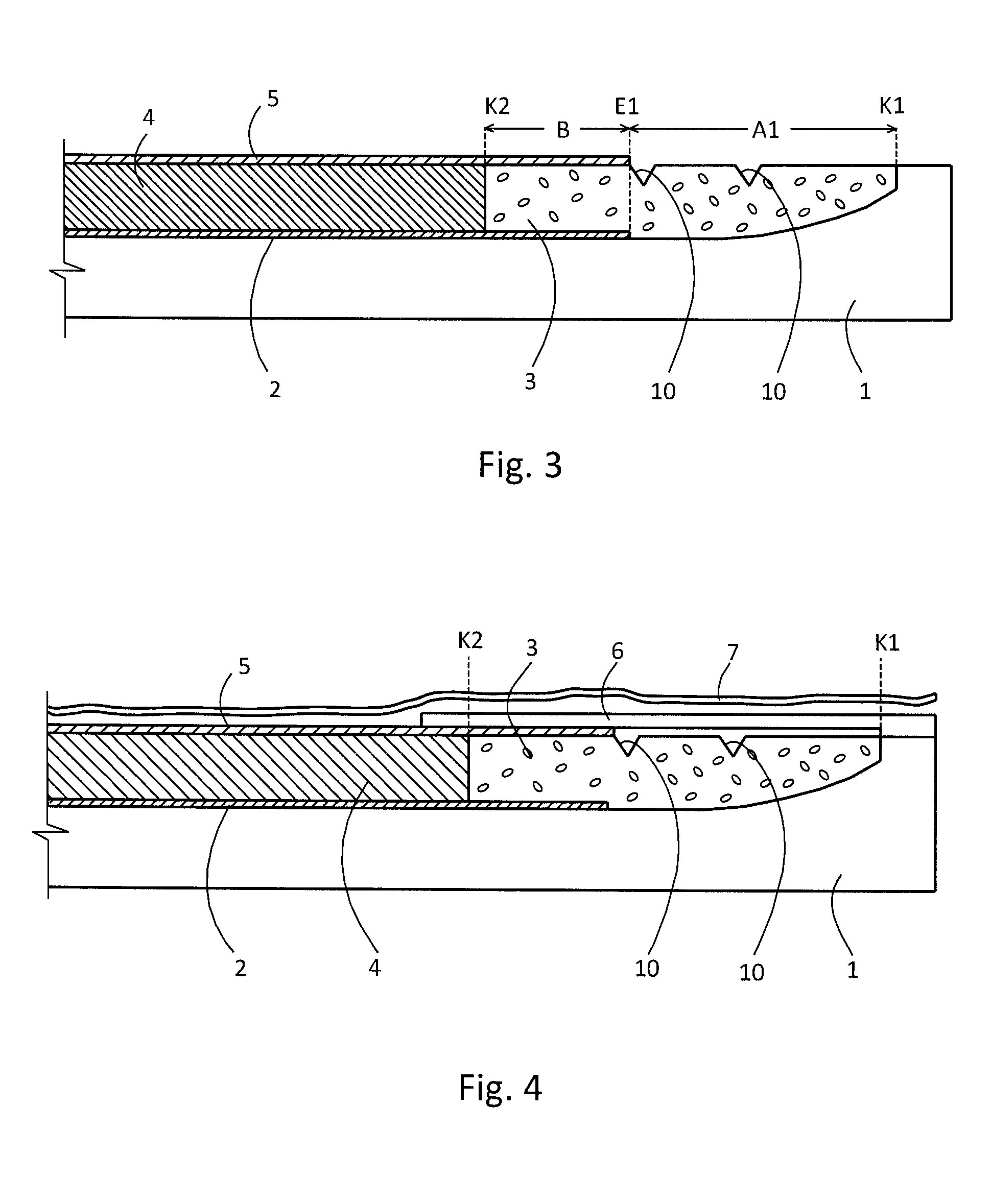Method for the manufacturing of a cladding element for a passenger cabin of a vehicle
a technology for passenger cabins and cladding elements, which is applied in the field of vehicle passenger cabin cladding elements manufacturing, can solve the problems of assembly, time and cost, and achieve the effects of reducing the risk of injury, improving the haptic properties of the proposed cladding element, and pleasing visual
- Summary
- Abstract
- Description
- Claims
- Application Information
AI Technical Summary
Benefits of technology
Problems solved by technology
Method used
Image
Examples
Embodiment Construction
[0028]In FIGS. 1 to 4, a mould, or forming shell, which represents the visible side of the cladding element to be manufactured, is identified with the reference sign 1.
[0029]In a first method step, initially a first prepreg 2 is laid into the forming shell 1. The first prepreg 2 is dimensioned such that a first distance A1 remains between a first edge K1 of the forming shell 1 and an end E1 of the first prepreg 2. The first distance A1 is, for example, 5 to 50 mm, preferably 10 to 30 mm. Thereafter, an elastic material strip 3 is laid into the forming shell 1, and specifically in such a manner that said material strip 3 bears on the first edge K1 of the forming shell 1. The material strip 3 is dimensioned such that, in portions, it superimposes the first prepreg 2. An overlapping portion, which extends from a second edge K2 of the material strip 3 to the end E1 of the first prepreg 2, has a width B. The width B of the overlapping portion may be 5 to 20 mm, preferably 10 to 15 mm.
[00...
PUM
| Property | Measurement | Unit |
|---|---|---|
| temperature | aaaaa | aaaaa |
| temperature | aaaaa | aaaaa |
| distance | aaaaa | aaaaa |
Abstract
Description
Claims
Application Information
 Login to View More
Login to View More - R&D
- Intellectual Property
- Life Sciences
- Materials
- Tech Scout
- Unparalleled Data Quality
- Higher Quality Content
- 60% Fewer Hallucinations
Browse by: Latest US Patents, China's latest patents, Technical Efficacy Thesaurus, Application Domain, Technology Topic, Popular Technical Reports.
© 2025 PatSnap. All rights reserved.Legal|Privacy policy|Modern Slavery Act Transparency Statement|Sitemap|About US| Contact US: help@patsnap.com



